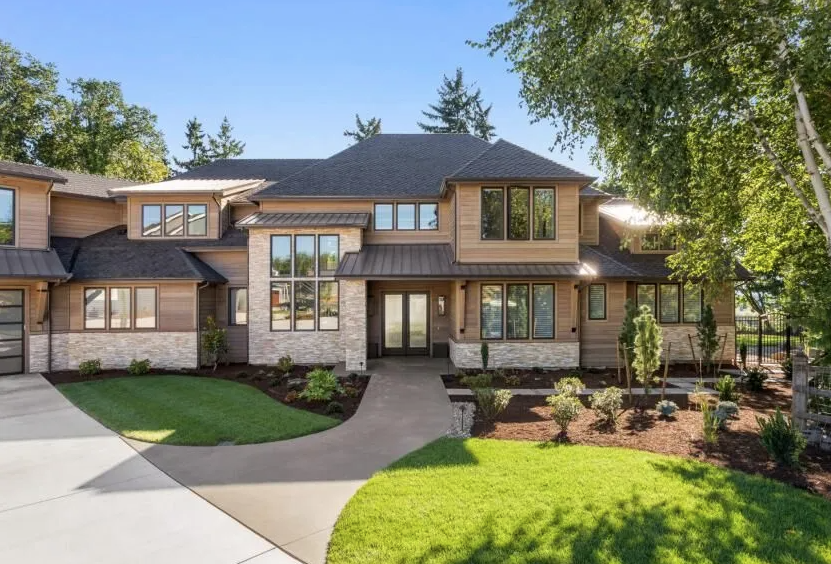The window market has a very bright future.
Our inaugural Window and Door Market Survey shows a return to normal seasonality after three years of consistently high demand. However, windows may be a bright spot buoyed by custom home design trends. In our US Custom Residential Architecture Index, 38% of custom residential architects and designers tell us that the number of windows per home is increasing, partly due to the trend toward modern architecture and clients’ desire for more natural light and to blend indoor and outdoor living.
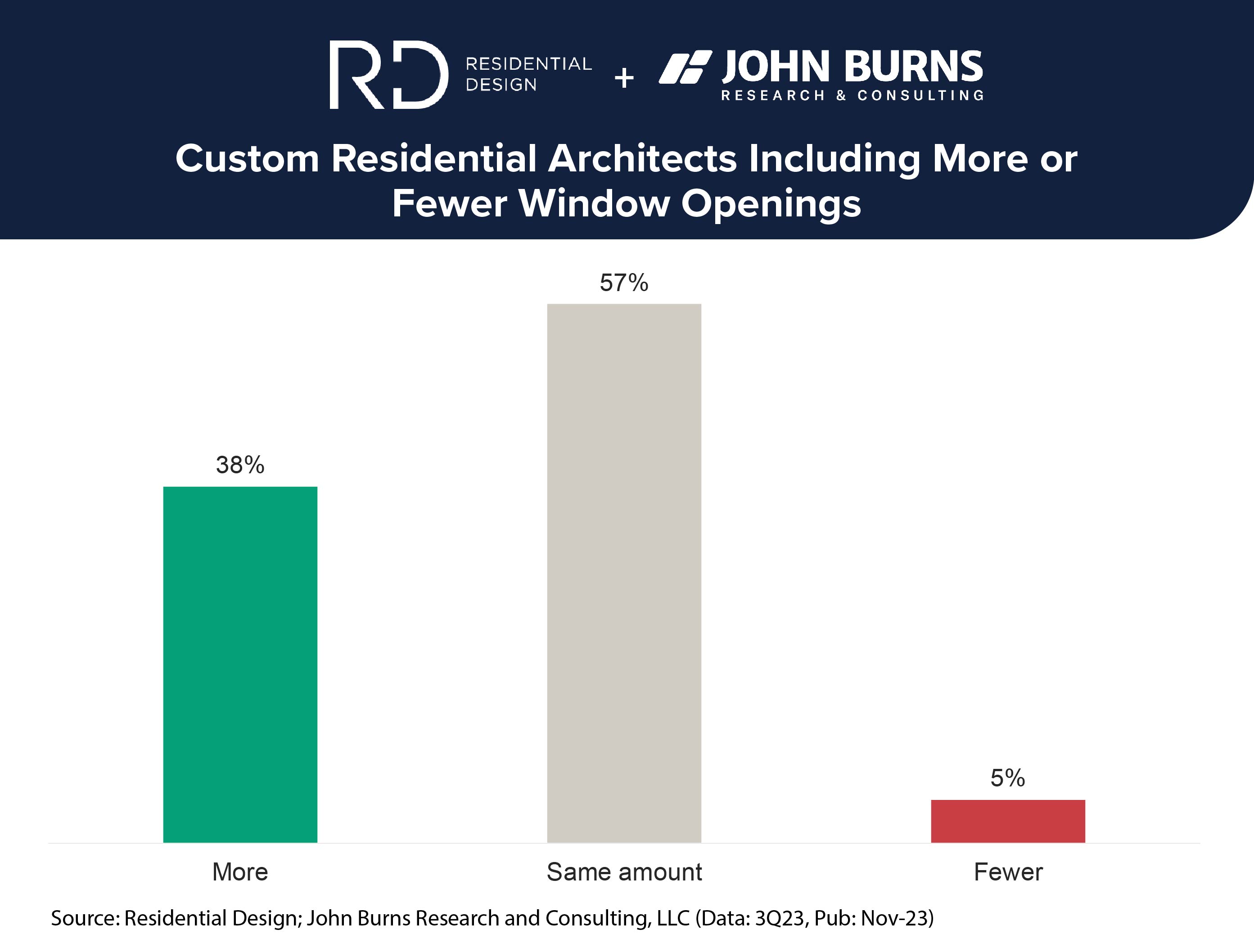
Furthermore, bigger windows (e.g., sliding doors and window walls) are increasingly in demand, with 35% of custom residential architects and designers including larger window openings and only 3% including smaller ones.
To meet custom residential architects’ and designers’ window needs, there are three focus areas for the future.
- Meet the market: Offer a lower-priced option—architects will trade down before reducing window count.
- Keep up with the competition: Improve energy efficiency to help architects and designers meet energy code requirements and lower their clients’ utility costs.
- Differentiate yourself: Design for climate/weather resistance and soundproofing, which are growing priorities for custom residential architects and designers but not for most window manufacturers.
To meet the market: Offer a lower-priced option.
Custom home demand slipped a bit in the third quarter, which custom residential architects and designers attribute to rising construction costs sidelining all but the most affluent clients. Despite this, window counts are not falling. Consumer demand for natural light and outdoor connection is so strong that architects and designers report they would sacrifice performance and quality before reducing window openings in the home. Offering a lower-priced option will allow architects and designers to trade down.

To keep up with the competition: Improve energy efficiency.
Custom residential architects and designers expect energy efficiency to be the window feature that will grow the most (79%) as a consideration over the next three years.
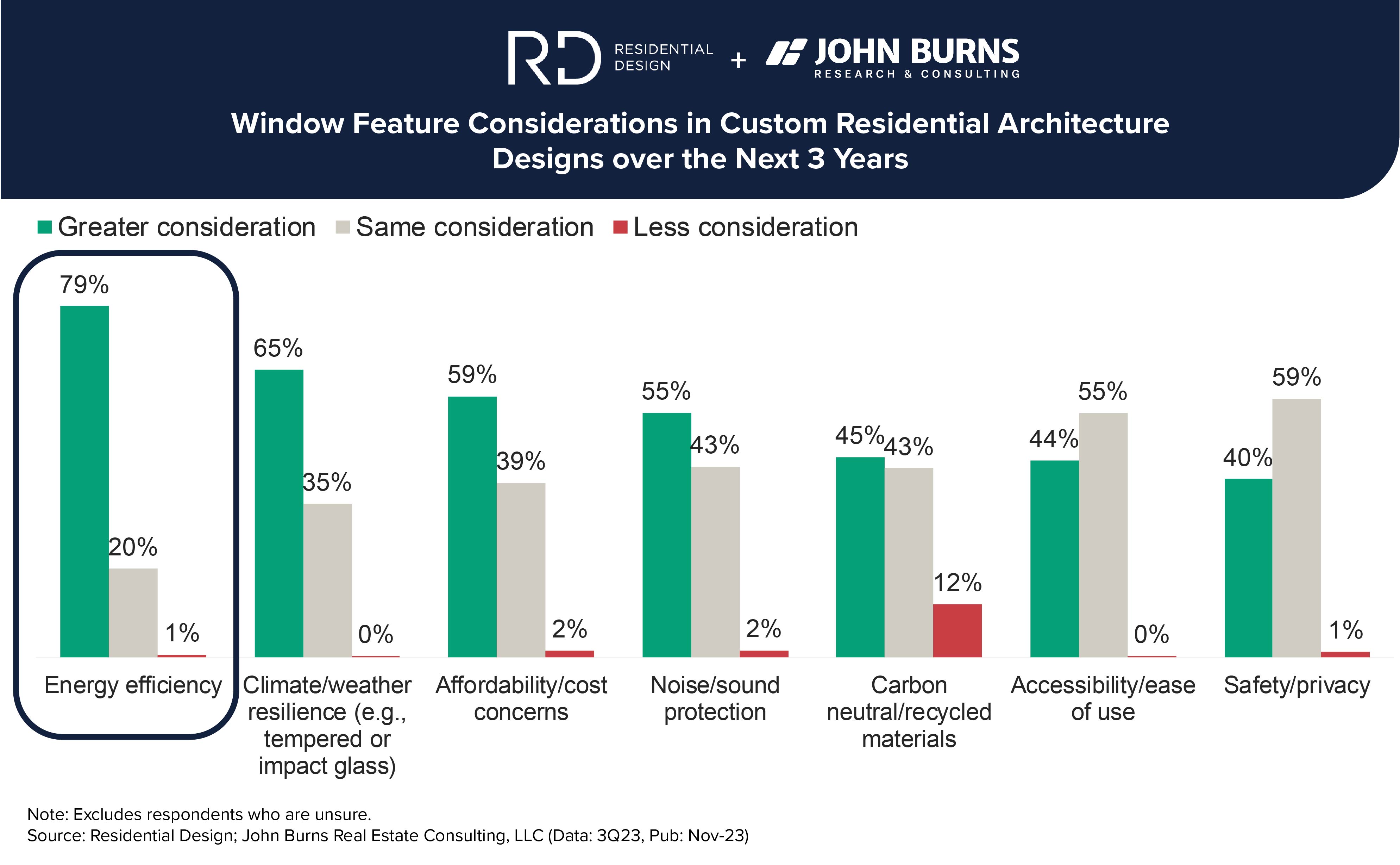
While important, energy-efficient windows will not set you apart from the competition. Per our Window and Door Market Survey, manufacturers are also increasing their focus on energy efficiency over the next 12 months. The game plan should not be to outdo your competition—most architects and designers simply need windows that will meet evolving energy code requirements. Above that, additional costs will need to be offset by utility cost savings.
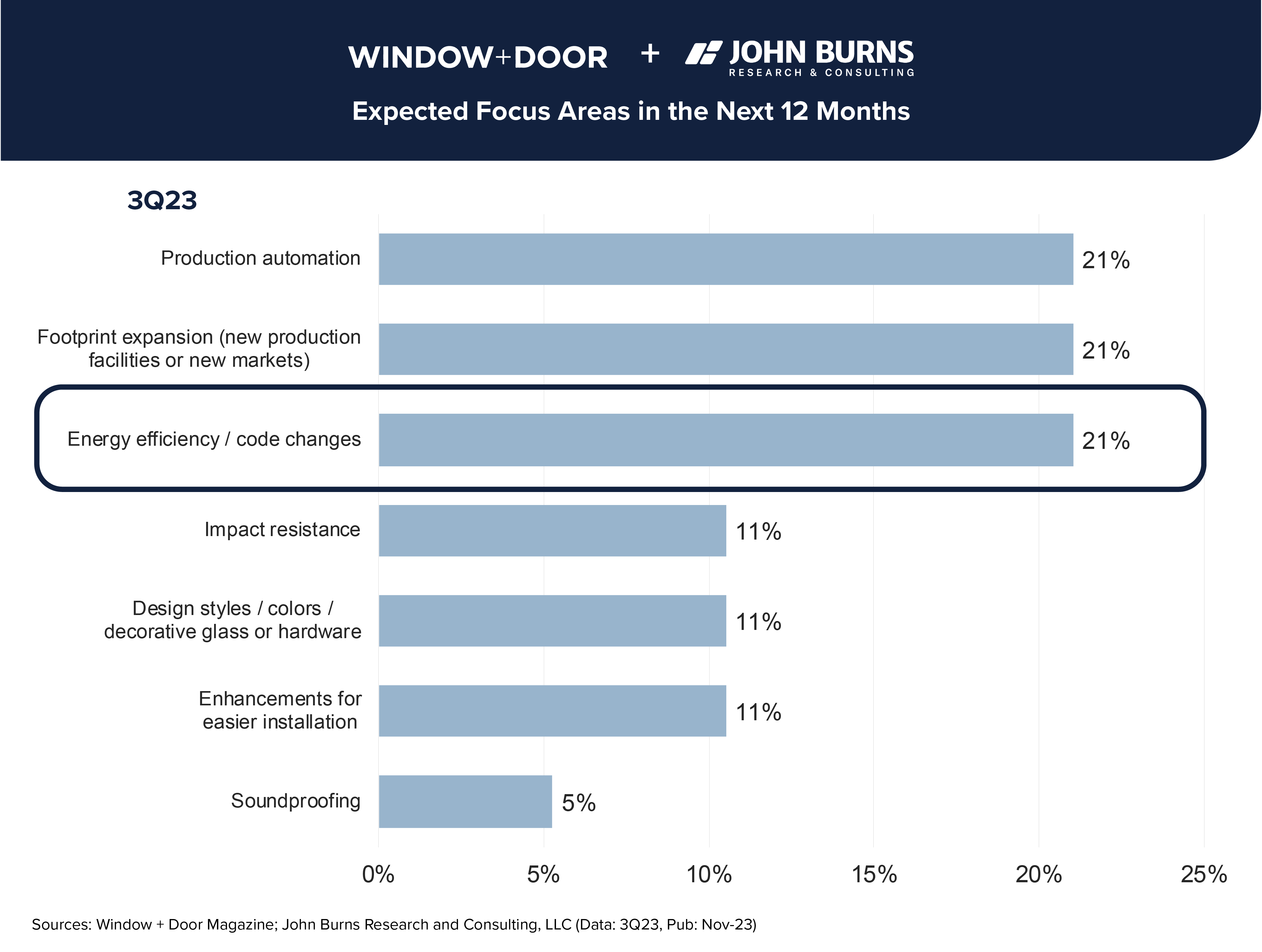
To differentiate yourself: Design for climate/weather resistance and soundproofing.
Custom residential architects and designers also predict that climate/weather resistance and noise/sound protection will grow in importance (65% and 55%, respectively), laying the groundwork for manufacturers to increase their focus on these features.
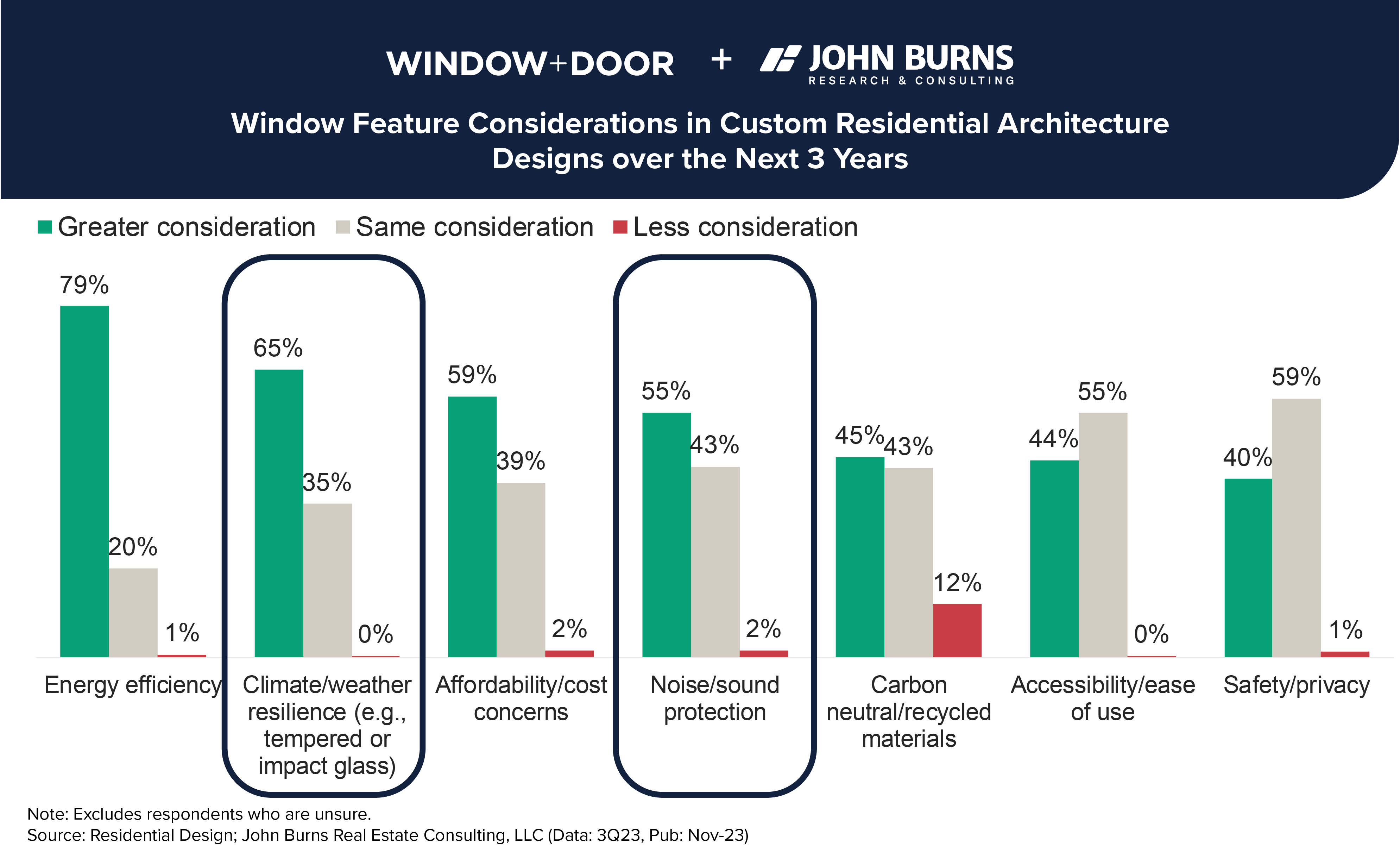
However, unlike energy efficiency in this arena, most manufacturers do not have plans to focus on impact resistance (11%) or soundproofing (5%) in the next year, creating an opportunity for differentiation from competitors.
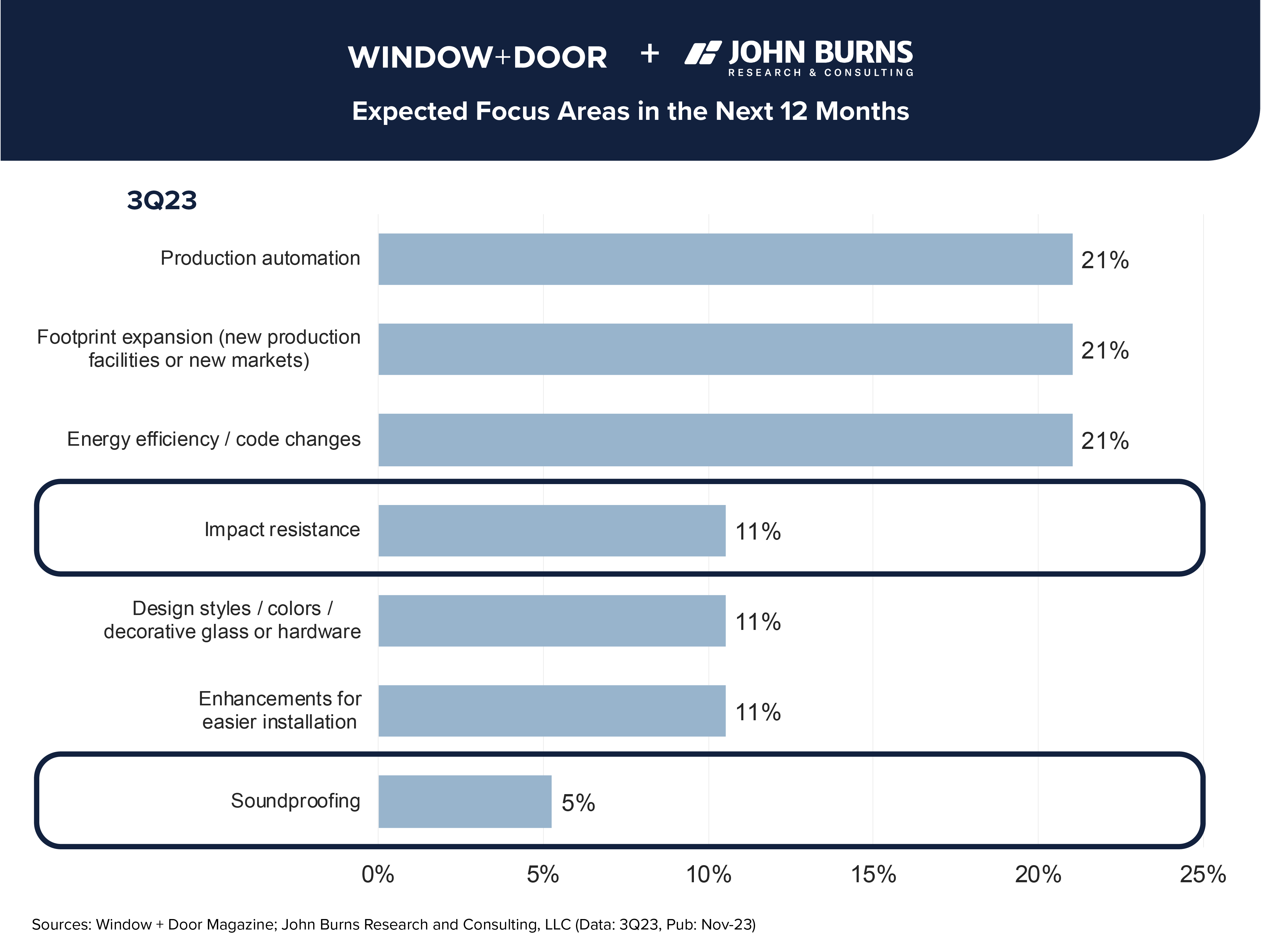
Interested in strategizing and connecting with the architects and builders designing the homes that your products appear in? Reach out to us today to learn about the New Home Trends Institute’s member-exclusive councils.
To learn more about the inaugural Window and Door Market Survey and/or US Custom Residential Architecture Index, please contact us.
We are excited to announce the release of the inaugural Residential Design / John Burns US Custom Residential Architecture Index (USCRAI) for 3Q23.
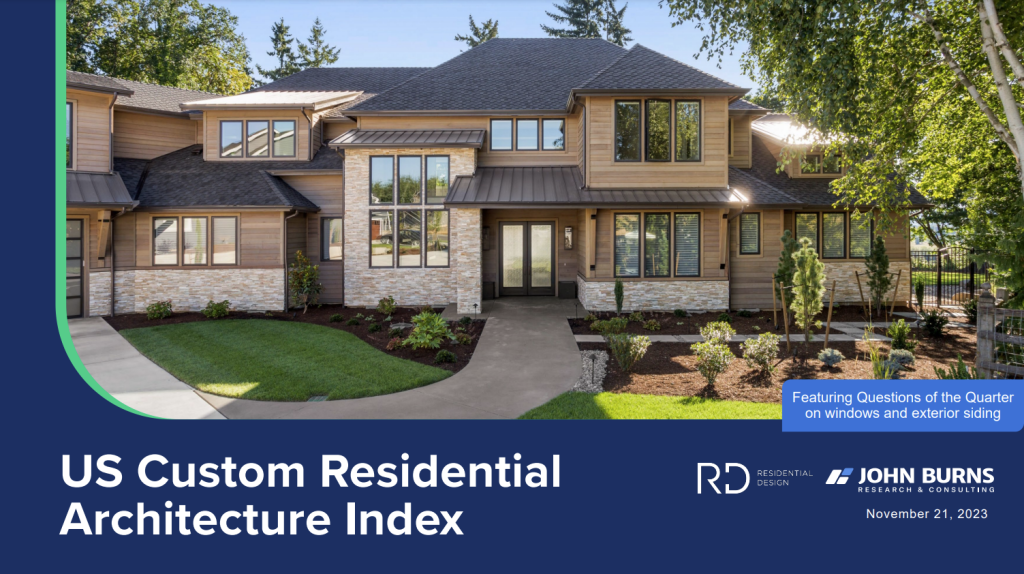
Click here to receive a free copy of the report
The USCRAI is a diffusion index reflecting weighted responses of custom architecture firms, which aims to track market conditions for custom residential design services nationwide. In partnership with Residential Design, each quarter we’ll report on project activity (project volume in the most recent quarter vs. the prior year) and near-term activity (project volume growth in the upcoming quarter). The USCRAI also gauges design demand by measuring the overall sentiment of client demand for custom residential design services. Custom residential homes typically make up 20%–30% of single-family starts.
Per our latest quarterly survey, the custom residential architecture market is normal for 3Q23, though client demand has lessened, and moderate declines in market conditions are forecasted.
The release of this report coincides with the inaugural release of the Window and Door Market Survey (WDMS) in partnership with Window + Door Magazine. The WDMS is a survey of leading manufacturers, suppliers, installers, and glass shops in the residential window and door market specializing in new construction and repair and remodel (R&R).
Window and door companies also note a return to normal seasonality after three years of consistently high demand throughout the year. 45% reported higher volumes and revenue in 3Q23 vs. a year ago, but it’s important to remember that last year, companies were still plagued by long lead times and extended backlogs. Companies report that backlogs are being worked through and are finally at pre-pandemic levels.
